What do we desire for a theory of consciousness?
We want it to explain why and how the structure of our experience is computationally relevant. Why would nature bother to wire, not only information per se, but our experiences in richly structured ways that seem to track task-relevant computation (though at times in elusive ways)?
I think we can derive an explanation here. It is both very theoretically satisfying and literally mind-bending. This allows us to rule out vast classes of computing systems as having no more than computationally trivial conscious experiences.
We have richly textured bound experiences precisely because the boundaries that individuate us also allow us to act as individuals in many ways. This individual behavior can reflect features of the state of the entire organism in energy-efficient ways. Evolution can recruit this individual, yet holistic, behavior due to its computational advantages. We think that the boundary might be the result of topological segmentation in physical fields.
Marr’s Levels of Analysis and the Being/Form Boundary
One lens we can use to analyze the possibility of sentience in systems is this conceptual boundary between “being” and “form”. Here “being” refers to the interiority of things- their intrinsic likeness. “Form” on the other hand refers to how they appear from the outside. Where you place the being/form boundary influences how you make sense of the world around you. One factor that seems to be at play for where you place the being/form boundary is your implicit background assumptions about consciousness. In particular, how you think of consciousness in relation to Marr’s levels of analysis:
- If you locate consciousness at the computational (or behavioral) level, then the being/form boundary might be computation/behavior. In other words, sentience simply is the performance of certain functions in certain contexts.
- If you locate it at the algorithmic level, then the being/form boundary might become algorithm/computation. Meaning that what matters for the inside is the algorithm, whereas the outside (the form) is the function the algorithm produces.
- And if you locate it at the implementation level, you will find that you identify being with specific physical situations (such as phases of matter and energy) and form as the algorithms that they can instantiate. In turn, the being/form boundary looks like crystals & bubbles & knots of matter and energy vs. how they can be used from the outside to perform functions for each other.
How you approach the question of whether a given chatbot is sentient will drastically depend on where you place the being/form boundary.
Many arguments against the sentience of particular computer systems are based on algorithmic inadequacy. This, for example, takes the form of choosing a current computational theory of mind (e.g. global workspace theory) and checking if the algorithm at play has the bare bones you’d expect a mind to have. This is a meaningful kind of analysis. And if you locate the being/form boundary at the algorithmic level then this is the only kind of analysis that seems to make sense.
What stops people from making successful arguments concerning the implementation level of analysis is confusion about the function for consciousness. So which physical systems are or aren’t conscious seems to be inevitably an epiphenomenalist construct. Meaning that drawing boundaries around systems with specific functions is an inherently fuzzy activity and any criteria we choose for whether a system is performing a certain function will be at best a matter of degree (and opinion).
But before we get there, it’s important to point out the usefulness of reasoning about the algorithmic layer:
Algorithmic Structuring as a Constraint
I think that most people who believe that digital sentience is possible will concede that at least in some situations The Chinese Room is not conscious. The extreme example is when the content of the Chinese Room turns out to be literally a lookup table. Here a simple algorithmic concern is sufficient to rule out its sentience: a lookup table does not have an inner state! And what you do, from the point of view of its inner workings, is the same no matter if you relabel which input goes with what output. Whatever is inscribed in the lookup table (with however many replies and responses as part of the next query) is not something that the lookup table structurally has access to! The lookup table is, in an algorithmic sense, blind to what it is and what it does1. It has no mirror into itself.
Algorithmic considerations are important. To not be a lookup table, we must have at least some internal representations. We must consider constraints on “meaningful experience”, such as probably having at least some of, or something analogous to: a decent number of working memory slots (and types), a good size of visual field, resolution of color in terms of Just Noticeable Differences, and so on. If your algorithm doesn’t even try to “render” its knowledge in some information-rich format, then it may lack the internal representations needed to really “understand”. Put another way: imagine that your experience is like a Holodeck. Ask the question of what is the lower bound on the computational throughput of each sensory modality and their interrelationships. Then see if the algorithm you think can “understand” has internal representations of that kind at all.
Steel-manning algorithmic concerns involves taking a hard look at the number of degrees of freedom of our inner world-simulation (in e.g. free-wheeling hallucinations) and making sure that there are implicit or explicit internal representations with roughly similar computational horsepower as those sensory channels.
I think that this is actually an easy constraint to meet relative to the challenge of actually creating sentient machines. But it’s a bare minimum. You can’t let yourself be fooled by a lookup table.
In practice, the AI researchers will just care about metrics like accuracy, meaning that they will use algorithmic systems with complex internal representations like ours only if it computationally pays off to do so! (Hanson in Age of EM makes the bet it that it is worth simulating a whole high-performing human’s experience; Scott points out we’d all be on super-amphetamines). Me? I’m extremely skeptical that our current mindstates are algorithmically (or even thermodynamically!) optimal for maximally efficient work. But even if normal human consciousness or anything remotely like it was such a global optimum that any other big computational task routes around to it as an instrumental goal, I still think we would need to check if the algorithm does in fact create adequate internal representations before we assign sentience to it.
Thankfully I don’t think we need to go there. I think that the most crucial consideration is that we can rule out a huge class of computing systems ever being conscious by identifying implementation-level constraints for bound experiences. Forget about the algorithmic level altogether for a moment. If your computing system cannot build a bound experience from the bottom up in such a way that it has meaningful holistic behavior, then no matter what you program into it, you will only have “mind dust” at best.
What We Want: Meaningful Boundaries
In order to solve the boundary problem we want to find “natural” boundaries in the world to scaffold off of those. We take on the starting assumption that the universe is a gigantic “field of consciousness” and the question of how atoms come together to form experiences becomes how this field becomes individuated into experiences like ours. So we need to find out how boundaries arise in this field. But these are not just any boundary, but boundaries that are objective, frame-invariant, causally-significant, and computationally-useful. That is, boundaries you can do things with. Boundaries that explain why we are individuals and why creating individual bound experiences was evolutionarily adaptive; not only why it is merely possible but also advantageous.
My claim is that boundaries with such properties are possible, and indeed might explain a wide range of puzzles in psychology and neuroscience. The full conceptually satisfying explanation results from considering two interrelated claims and understanding what they entail together. The two interrelated claims are:
- Topological boundaries are frame-invariant and objective features of physics
- Such boundaries are causally significant and offer potential computational benefits
I think that these two claims combined have the potential to explain the phenomenal binding/boundary problem (of course assuming you are on board with the universe being a field of consciousness). They also explain why evolution was even capable of recruiting bound experiences for anything. Namely, that the same mechanism that logically entails individuation (topological boundaries) also has mathematical features useful for computation (examples given below). Our individual perspectives on the cosmos are the result of such individuality being a wrinkle in consciousness (so to speak) having non-trivial computational power.
In technical terms, I argue that a satisfactory solution to the boundary problem (1) avoids strong emergence(D. Chalmers 2006), (2) sidesteps the hard problem of consciousness(D. J. Chalmers 2007), (3) prevents the complication of epiphenomenalism, and (4) is compatible with the modern scientific world picture.
And the technical reason why topological segmentation provides the solution is that with it: (1) no strong emergence is required because behavioral holism is only weakly emergent on the laws of physics, (2) we sidestep the hard problem via panpsychism, (3) phenomenal binding is not epiphenomenal because the topological segments have holistic causal effects (such that evolution would have a reason to select for them), and (4) we build on top of the laws of physics rather than introduce new clauses to account for what happens in the nervous system. In this post you’ll get a general walkthrough of the solution. The fully rigorous, step by step, line of argumentation will be presented elsewhere. Please see the video for the detailed breakdown of alternative solutions to the binding/boundary problem and why they don’t work.
Holistic (Field) Computing
A very important move that we can make in order to explore this space is to ask ourselves if the way we think about a concept is overly restrictive. In the case of computation, I would claim that the concept is either applied extremely vaguely or that making it rigorous makes its application so narrow that it loses relevance. In the former case we have the tendency for people to equate consciousness with computation in a very abstract level (such as “resource gathering” and “making predictions” and “learning from mistakes”). In the latter we have cases where computation is defined in terms of computable functions. The conceptual mistake to avoid is to think that just because you can compute a function with a Turing machine, that therefore you are creating the same inner (bound or not) physical states along the way. And while yes, it would be possible to approximate the field behavior we will discuss below with a Turing machine, it would be computationally inefficient (as it would need to simulate a massively parallel system) and lack the bound inner states (and their computational speedups) needed for sentience.
The (conceptual engineering) move I’m suggesting we make is to first of all enrich our conception of computation. To notice that we’ve lived with an impoverished notion all along.
I suggest that our conception of computation needs to be broad enough to include bound states as possible meaningful inputs, internal steps and representations, and outputs. This enriched conception of computation would be capable of making sense of computing systems that work with very unusual inputs and outputs. For instance, it has no problem thinking of a computer that takes as input chaotic superfluid helium and returns soap bubble clusters as outputs. The reason to use such exotic medium is not to add extra steps, but in fact to remove extra steps by letting physics do the hard work for you.
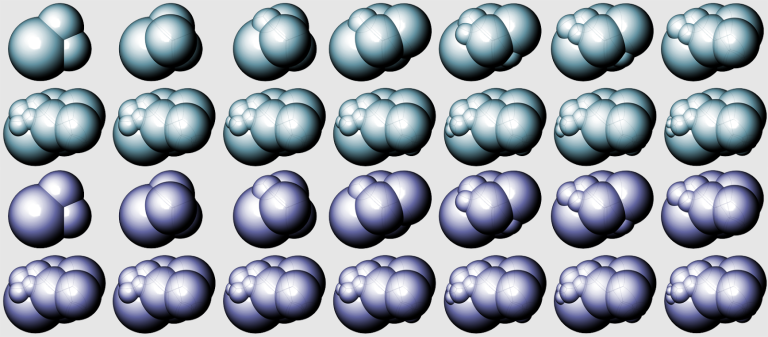
To illustrate just one example of what you can do with this enriched paradigm of computing I am trying to present to you, let’s now consider the hidden computational power of soap films. Say that you want to connect three poles with a wire. And you want to minimize how much wire you use. One option is to use trigonometry and linear algebra, another one is to use numerical simulations. But an elegant alternative is to create a model of the poles between two parallel planes and then submerge the structure in soapy water.

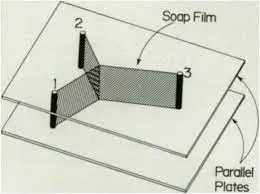

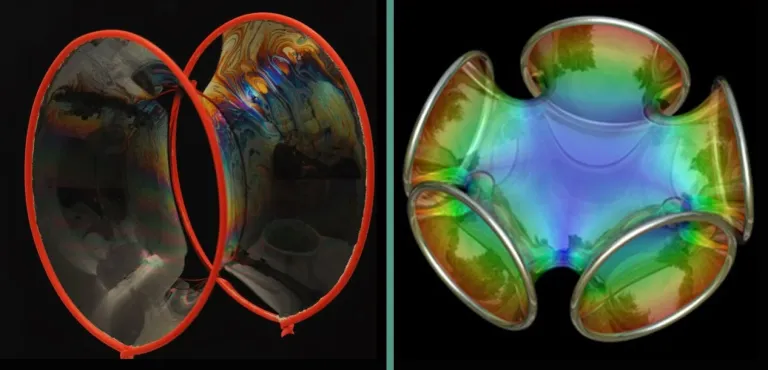
Letting the natural energy-minimizing property of soap bubbles find the shortest connection between three poles is an interesting way of performing a computation. It is uniquely adapted to the problem without needing tweaks or adjustments – the self-organizing principle will work the same (within reason) wherever you place the poles. You are deriving computational power from physics in a very customized way that nonetheless requires no tuning or external memory. And it’s all done simply by each point of the surface wanting to minimize its tension. Any non-minimal configuration will have potential energy, which then gets transformed into kinetic energy and makes it wobble, and as it wobbles it radiates out its excess energy until it reaches a configuration where it doesn’t wobble anymore. So you have to make the solution of your problem precisely a non-wobbly state!
In this way of thinking about computation, an intrinsic part of the question about what kind of thing a computation is will depend on what physical processes were utilized to implement it. In essence, we can (and I think should) enrich our very conception of computation to include what kind of internal bound states the system is utilizing, and the extent to which the holistic physical effects of such inner states are computationally trivial or significant.
We can call this paradigm of computing “Holistic Computing”.
From Soap Bubbles to ISING-Solvers Meeting Schedulers Implemented with Lasers
Let’s make a huge jump from soap water-based computation. A much more general case that is nonetheless in the same family as using soap bubbles for compute, is having a way to efficiently solve the ISING problem. In particular, having an analog physics-based annealing method in this case comes with unique computational benefits: it turns out that non-linear optics can do this very efficiently. You are in a certain way using the universe’s very frustration with the problem (don’t worry I don’t think it suffers) to get it solved. Here is an amazing recent example: Ising Machines: Non-Von Neumann Computing with Nonlinear Optics – Alireza Marandi – 6/7/2019 (presented at Caltech).
The person who introduces Marandi in the video above is Kwabena Boahen, with whom I had the honor to take his course at Stanford (and play with the neurogrid!). Back in 2012 something like the neurogrid seemed like the obvious path to AGI. Today, ironically, people imagine scaling transformers is all you need. Tomorrow, we’ll recognize the importance of holistic field behavior and the boundary problem.
One way to get there on the computer science front will be by first demonstrating a niche set of applications where e.g. non-linear optics ISING solvers vastly outperform GPUs for energy minimization tasks in random graphs. But as the unique computational benefits become better understood, we will sooner or later switch from thinking about how to solve our particular problem, to thinking about how we can cast our particular problem as an ISING/energy minima problem so that physics solves the problem for us. It’s like having a powerful computer but it only speaks a very specific alien language. If you can translate your problem into its own terms, it’ll solve it at lightning speed. If you can’t, it will be completely useless.
Intelligence: Collecting and Applying Self-Organizing Principles
This takes us to the question of whether general intelligence is possible without switching to a Holistic Computing paradigm. Can you have generally intelligent (digital) chatbots? In some senses, yes. In perhaps the most significant sense, no.
Intelligence is a contentious topic (see here David Pearce’s helpful breakdown of 6 of its facets). One particular facet of intelligence that I find enormously fascinating and largely under-explored is the ability to make sense of new modes of consciousness and then recruit them for computational and aesthetic purposes. THC and music production have a long history of synergy, for instance. A composer who successfully uses THC to generate musical ideas others find novel and meaningful is applying this sort of intelligence. THC-induced states of consciousness are largely dysfunctional for a lot of tasks. But someone who utilizes the sort of intelligence (or meta-intelligence) I’m pointing to will pay attention to the features of experience that do have some novel use and lean on those. THC might impair working memory, but it also expands and stretches musical space. Intensifies reverb, softens rough edges in heart notes, increases emotional range, and adds synesthetic brown noise (which can enhance stochastic resonance). With wit and determination (and co-morbid THC/music addiction), musical artists exploit the oddities of THC musicality to great effect, arguably some much more successfully than others.
The kind of reframe that I’d like you to consider is that we are all in fact something akin to these stoner musicians. We were born with this qualia resonator with lots of cavities, kinds of waves, levels of coupling, and so on. And it took years for us to train it to make adaptive representations of the environment. Along the way, we all (typically) develop a huge repertoire of self-organizing principles we deploy to render what we believe is happing out there in the world. The reason why an experience of “meditation on the wetness of water” can be incredibly powerful is not because you are literally tuning into the resonant frequency of the water around you and in you. No, it’s something very different. You are creating the conditions for the self-organizing principle that we already use to render our experiences with water to take over as the primary organizer of our experience. Since this self-organizing principle does not, by its nature, generate a center, full absorption into “water consciousness” also has a no-self quality to it. Same with the other elements. Excitingly, this way of thinking also opens up our mind about how to craft meditations from first principles. Namely, by creating a periodic table of self-organizing principles and then systematically trying combinations until we identify the laws of qualia chemistry.
You have to come to realize that your brain’s relationship with self-organizing principles is like that of a Pokémon trainer and his Pokémon (ideally in a situation where Pokémon play the Glass Bead Game with each other rather than try to hurt each other– more on that later). Or perhaps like that of a mathematician and clever tricks for proofs, or a musician and rhythmic patterns, and so on. Your brain is a highly tamed inner space qualia warp drive usually working at 1% or less. It has stores of finely balanced and calibrated self-organizing principles that will generate the right atmospheric change to your experience at the drop of a hat. We are usually unaware of how many moods, personalities, contexts, and feelings of the passage of time there are – your brain tries to learn them all so it has them in store for whenever needed. All of a sudden: haze and rain, unfathomable wind, mercury resting motionless. What kind of qualia chemistry did your brain just use to try to render those concepts?
We are using features of consciousness -and the self-organizing principles it affords- to solve problems all the time without explicitly modeling this fact. In my conception of sentient intelligence, being able to recruit self-organizing principles of consciousness for meaningful computation is a pillar of any meaningfully intelligent mind. I think that largely this is what we are doing when humans become extremely good at something (from balancing discs to playing chess and empathizing with each other). We are creating very specialized qualia by finding the right self-organizing principles and then purifying/increasing their quality. To do an excellent modern day job that demands constraint satisfaction at multiple levels of analysis at once likely requires us to form something akin to High-Entropy Alloys of Consciousness. That is, we are usually a judiciously chosen mixture of many self-organizing principles balanced just right to produce a particular niche effect.
Meta-Intelligence
David Pearce’s conception of Full-spectrum Superintelligence is inspiring because it takes into account the state-space of consciousness (and what matters) in judging the quality of a certain intelligence in addition to more traditional metrics. Indeed, as another key conceptual engineering move, I suggest that we can and need to enrich our conception of intelligence in addition to our conception of computation.
So here is my attempt at enriching it further and adding another perspective. One way we can think of intelligence is as the ability to map a problem to a self-organizing principle that will “solve it for you” and having the capacity to instantiate that self-organizing principle. In other words, intelligence is, at least partly, about efficiency: you are successful to the extent that you can take a task that would generally require a large number of manual operations (which take time, effort, and are error-prone) and solve it in an “embodied” way.
Ultimately, a complex system like the one we use for empathy mixes both serial and parallel self-organizing principles for computation. Empathy is enormously cognitively demanding rather than merely a personality trait (e.g. agreeableness), as it requires a complex mirroring capacity that stores and processes information in efficient ways. Exploring exotic states of consciousness is even more computationally demanding. Both are error-prone.
Succinctly, I suggest we consider:
One key facet of intelligence is the capacity to solve problems by breaking them down into two distinct subproblems: (1) find a suitable self-organizing principle you can instantiate reliably, and (2) find out how to translate your problem to a format that our self-organizing principle can be pointed at so that it solves it for us.
Here is a concrete example. If you want to disentangle a wire, you can try to first put it into a discrete datastructure like a graph, and then get the skeleton of the knot in a way that allows you to simplify it with Reidemeister moves (and get lost in the algorithmic complexity of the task). Or you could simply follow the lead of Yu et al. 2021(Yu et al. 2021) and make the surfaces repulsive and let this principle solve the problem for you.


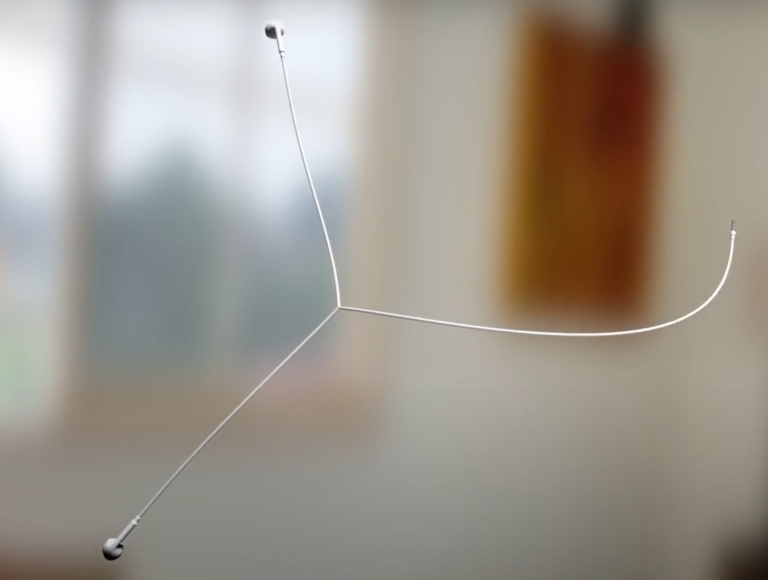
These repulsion-based disentanglement algorithm are explained in this video. Importantly, how to do this effectively still needs fine tuning. The method they ended up using was much faster than the (many) other ones tried (a Full-Spectrum Superintellligence would be able to “wiggle” the wires a bit if they got stuck, of course):
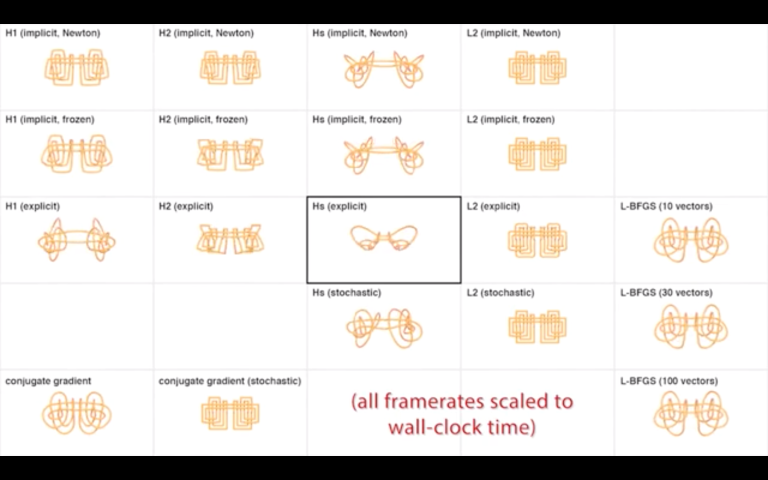
This is hopefully giving you new ways of thinking about computation and intelligence. The key point to realize is that these concepts are not set in stone, and to a large extent may limit our thinking about sentience and intelligence.
Now, I don’t believe that if you simulate a self-organizing principle of this sort you will get a conscious mind. The whole point of using physics to solve your problem is that in some cases you get better performance than algorithmically representing a physical system and then using that simulation to instantiate self-organizing principles. Moreover physics simulations, to the extent they are implemented in classical computers, will fail to generate the same field boundaries that would be happening in the physical system. To note, physics-inspired simulations like [Yu et al 2021] are nonetheless enormously helpful to illustrate how to think of problem-solving with a massively parallel analog system.
Are Neural Cellular Automata Conscious?
The computational success of Neural Cellular Automata(Mordvintsev et al. 2020) is primarily algorithmic. In essence, digitally implemented NCA are exploring a paradigm of selection and amplification of self-organizing principles, which is indeed a very different way of thinking about computation. But critically any NCA will still lack sentience. The main reasons are that they (a) don’t use physical fields with weak downward causation, and (b) don’t have a mechanism for binding/boundary making. Digitally-implemented cellular automata may have complex emergent behavior, but they generate no meaningful boundaries (i.e. objective, frame-invariant, causally-significant, and computationally-useful). That said, the computational aesthetic of NCA can be fruitfully imported to the study of Holistic Field Computing, in that the techniques for selecting and amplifying self-organizing principles already solved for NCAs may have analogues in how the brain recruits physical self-organizing principles for computation.
Exotic States of Consciousness
Perhaps one of the most compelling demonstrations of the possible zoo (or jungle) of self-organizing principles out of which your brain is recruiting but a tiny narrow range is to pay close attention to a DMT trip.
DMT states of consciousness are computationally non-trivial on many fronts. It is difficult to emphasize how enriched the set of experiential building blocks becomes in such states. Their scientific significance is hard to overstate. Importantly, the bulk of the computational power on DMT is dedicated to trying to make the experience feel good and not feel bad. The complexity involved in this task is often overwhelming. But one could envision a DMT-like state in which some parameters have been stabilized in order to recruit standardized self-organizing principles available only in a specific region of the energy-information landscape. I think that cataloguing the precise mathematical properties of the dynamics of attention and awareness on DMT will turn out to have enormous computational value. And a lot of this computational value will generally be pointed towards aesthetic goals.
To give you a hint of what I’m talking about: A useful QRI model (indeed, algorithmic reduction) of the phenomenology of DMT is that it (a) activates high-frequency metronomes that shake your experience and energize it with a high-frequency vibe, and (b) a new medium of wave propagation gets generated that allows very disparate parts of one’s experience to interact with one another.

At a sufficient dose, DMT’s secondary effect also makes your experience feel sort of “wet” and “saturated”. Your whole being can feel mercurial and liquidy (cf: Plasmatis and Jim Jam). A friend speculates that’s what it’s like for an experience to be one where everything is touching everything else (all at once).
There are many Indra’s Net-type experiences in this space. In brief, experiences where “each part reflects every other part” are an energy minimum that also reduces prediction errors. And there is a fascinating non-trivial connection with the Free Energy Principle, where experiences that minimize internal prediction errors may display a lot of self-similarity.
To a first approximation, I posit that the complex geometry of DMT experiences are indeed the non-linearities of the DMT-induced wave propagation medium that appear when it is sufficiently energized (so that it transitions from the linear to the non-linear regime). In other words, the complex hallucinations are energized patterns of non-linear resonance trying to radiate out their excess energy. Indeed, as you come down you experience the phenomenon of condensation of shapes of qualia.
Now, we currently don’t know what computational problems this uncharted cornucopia of self-organizing principles could solve efficiently. The situation is analogous to that of the ISING Solver discussed above: we have an incredibly powerful alien computer that will do wonders if we can speak its language, and nothing useful otherwise. Yes, DMT’s computational power is an alien computer in search of a problem that will fit its technical requirements.
Vibe-To-Shape-And-Back
Michael Johnson, Selen Atasoy, and Steven Lehar all have shaped my thinking about resonance in the nervous system. Steven Lehar in particular brought to my attention non-linear resonance as a principle of computation. In essays like The Constructive Aspect of Visual Perception(Lehar 2003) he presents a lot of visual illusions for which non-linear resonance works as a general explanatory principle (and then in The Grand Illusion(Lehar 2010) he reveals how his insights were informed by psychonautic exploration).
One of the cool phenomenological observations Lehar made based on his exploration with DXM was that each phenomenal object has its own resonant frequency. In particular, each object is constructed with waves interfering with each other at a high-enough energy that they bounce off each other (i.e. are non-linear). The relative vibration of the phenomenal objects is a function of the frequencies of resonance of the waves of energy bouncing off each other that are constructing the objects.
In this way, we can start to see how a “vibe” can be attributed to a particular phenomenal object. In essence, long intervals will create lower resonant frequencies. And if you combine this insight with QRI paradigms, you see how the vibe of an experience can modulate the valence (e.g. soft ADSR envelopes and consonance feeling pleasant, for instance). Indeed, on DMT you get to experience the high-dimensional version of music theory, where the valence of a scene is a function of the crazy-complex network of pairwise interactions between phenomenal objects with specific vibratory characteristics. Give thanks to annealing because tuning this manually would be a nightmare.
But then there is the “global” vibe…
Topological Pockets
So far I’ve provided examples of how Holistic Computing enriches our conception of intelligence, computing, and how it even shows up in our experience. But what I’ve yet to do is connect this with meaningful boundaries, as we set ourselves to do. In particular, I haven’t explained why Holistic Computing would arise out of topological boundaries.
For the purpose of this essay I’m defining a topological segment (or pocket) to be a region that can’t be expanded further without this becoming false: every point in the region locally belongs to the same connected space.
The Balloons’ Case
In the case of balloons this cashes out as: a topological segment is one where each point can go to any other point without having to go through connector points/lines/planes. It’s essentially the set of contiguous surfaces.
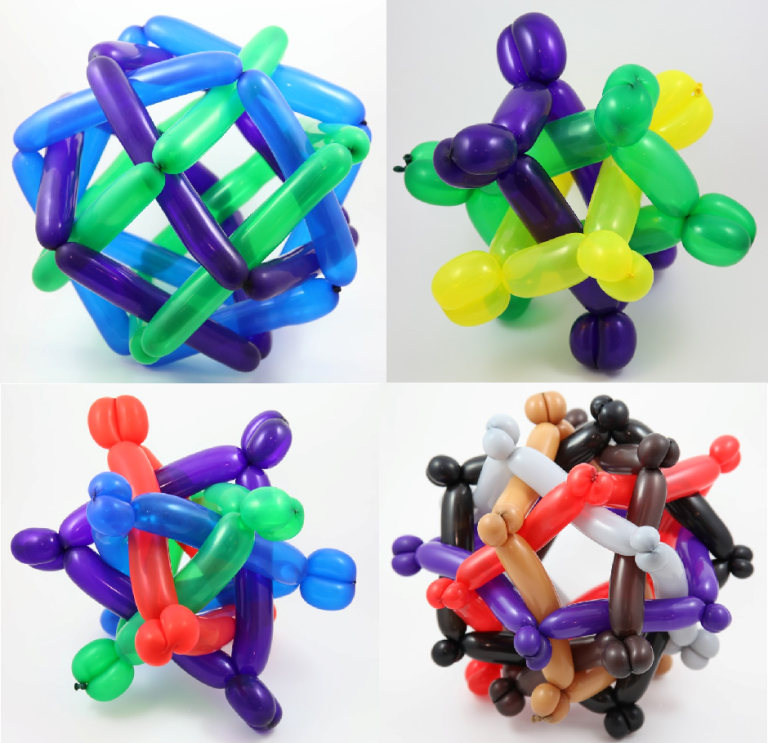


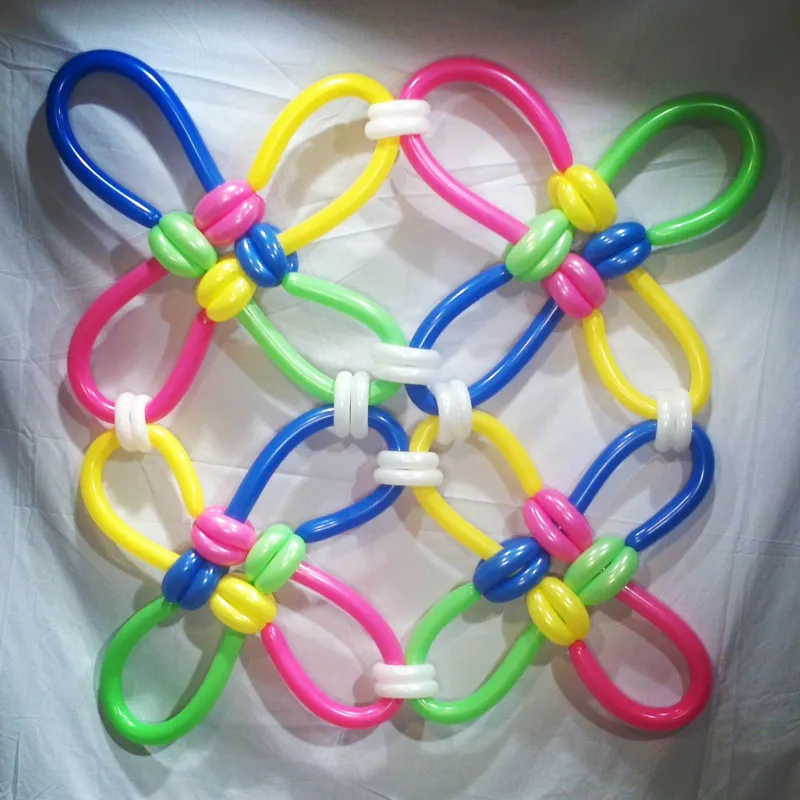

Now, each of these pockets can have both a rich set of connections to other pockets as well as intricate internal boundaries. The way we could justify Computational Holism being relevant here is that the topological pockets trap energy, and thus allow the pocket to vibrate in ways that express a lot of holistic information. Each contiguous surface makes a sound that represents its entire shape, and thus behaves as a unit in at least this way.
The General Case
An important note here is that I am not claiming that (a) all topological boundaries can be used for Holistic Computing, or (b) to have Holistic Computing you need to have topological boundaries. Rather, I’m claiming that the topological segmentation responsible for individuating experiences does have applications for Holistic Computing and that this conceptually makes sense and is why evolution bothered to make us conscious. But for the general case, you probably do get quite a bit of both Holistic Computing without topological segmentation and vice versa. For example an LC circuit can be used for Holistic Computing on the basis of its steady analog resonance, but I’m not sure if it creates a topological pocket in the EM fields per se.
At this stage of the research we don’t have a leading candidate for the precise topological feature of fields responsible for this. But the explanation space is promising based on being able to satisfy theoretical constraints that no other theory we know of can.
But I can nonetheless provide a proof of concept for how a topological pocket does come with really impactful holism. Let’s dive in!
Getting Holistic Behavior Out of a Topological Pocket
Creating a topological pocket may be consequential in one of several ways. One option for getting holistic behavior arises if you can “trap” energy in the pocket. As a consequence, you will energize its harmonics. The particular way the whole thing vibrates is a function of the entire shape at once. So from the inside, every patch now has information about the whole (namely, by the vibration it feels!)2.
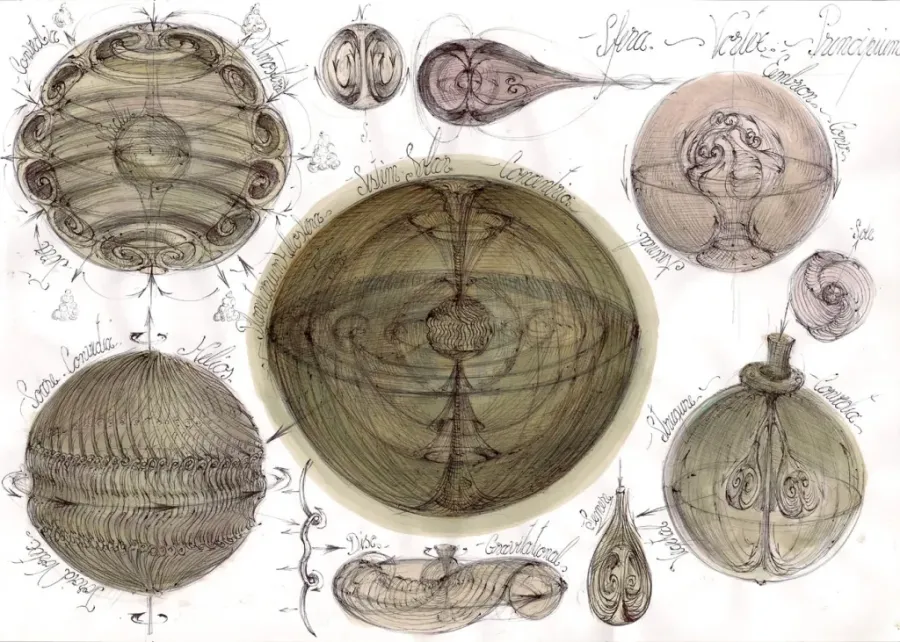

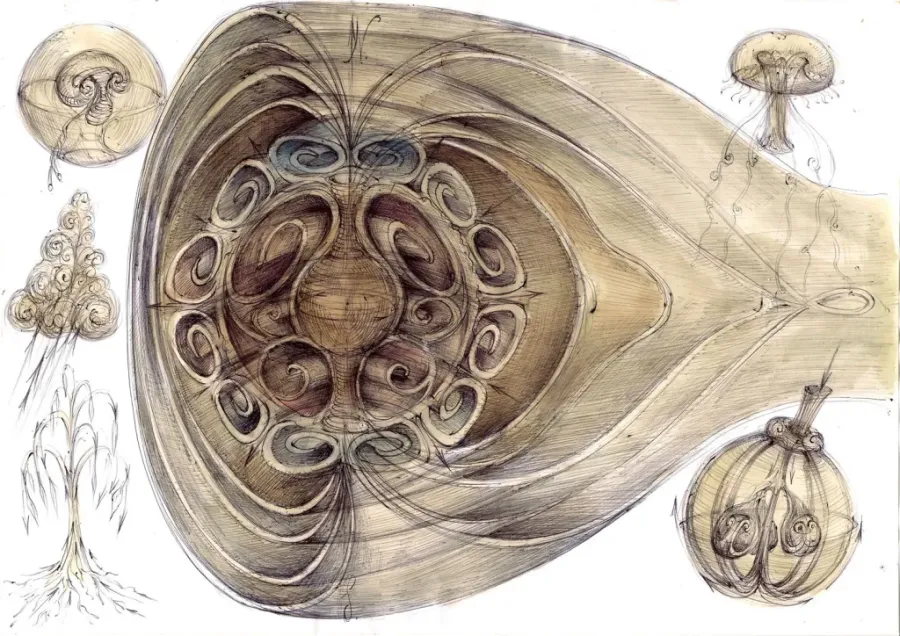
One possible overarching self-organizing principle that the entire pocket may implement is valence-gradient ascent. In particular, some configurations of the field are more pleasant than others and this has to do with the complexity of the global vibe. Essentially, the reason no part of it wants to be in a pocket with certain asymmetries, is because those asymmetries actually make themselves known everywhere within the pocket by how the whole thing vibrates. Therefore, for the same reason a soap bubble can become spherical by each point on the surface trying to locally minimize tension, our experiences can become symmetrical and harmonious by having each “point” in them trying to maximize its local valence.
Self Mirroring
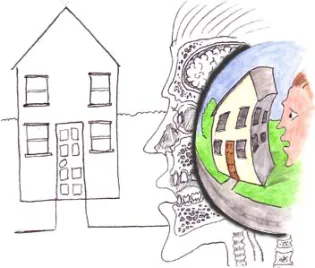
And here we arrive at perhaps one of the craziest but coolest aspects of Holistic Computing I’ve encountered. Essentially, if we go to the non-linear regime, then the whole vibe is not merely just the weighted sum of the harmonics of the system. Rather, you might have waves interfere with each other in a concentrated fashion in the various cores/clusters, and in turn these become non-linear structures that will try to radiate out their energy. And to maximize valence there needs to be a harmony between the energy coming in and out of these dense non-linearities(Gómez Emilsson 2021). In our phenomenology this may perhaps point to our typical self-consciousness. In brief, we have an internal avatar that “reflects” the state of the whole! We are self-mirroring machines! Now this is really non-trivial (and non-linear) Holistic Computing.
Cut From the Same Fabric
So here is where we get to the crux of the insight. Namely, that weakly emergent topological changes can simultaneously have non-trivial causal/computational effects while also solving the boundary problem. We avoid strong emergence but still get a kind of ontological emergence: since consciousness is being cut out of one huge fabric of consciousness, we don’t ever need strong emergence in the form of “consciousness out of the blue all of a sudden”. What you have instead is a kind of ontological birth of an individual. The boundary legitimately created a new being, even if in a way the total amount of consciousness is the same. This is of course an outrageous claim (that you can get “individuals” by e.g. twisting the electric field in just the right way). But I believe the alternatives are far crazier once you understand what they entail.
In a Nutshell
To summarize, we can rule out any of the current computational systems implementing AI algorithms to have anything but trivial consciousness. If there are topological pockets created by e.g. GPUs/TPUs, they are epiphenomenal – the system is designed so that only the local influences it has hardcoded can affect the behavior at each step.
The reason the brain is different is that it has open avenues for solving the boundary problem. In particular, a topological segmentation of the EM field would be a satisfying option, as it would simultaneously give us both holistic field behavior (computationally useful) and a genuine natural boundary. It extends the kind of model explored by Johnjoe McFadden (Conscious Electromagnetic Information Field(McFadden 2020)) and Susan Pockett (Consciousness Is a Thing, Not a Process(Pockett 2000)). They (rightfully) point out that the EM field can solve the binding problem. The boundary problem, in turn, emerges. With topological boundaries, finally, you can get meaningful boundaries (objective, frame-invariant, causally-significant, and computationally-useful).
This conceptual framework both clarifies what kind of system is at minimum required for sentience, and also opens up a research paradigm for systematically exploring topological features of the fields of physics and their plausible use by the nervous system.
See also:
- physicalism.com by David Pearce
- Against Functionalism by Michael Johnson
- The Binding Problem by Steven Lehar
- Lots of links on LaMDA / Key questions about artificial sentience: an opinionated guide by Robert Long
- Non-Linear Wave Computing: Vibes, Gestalts, and Realms on my YouTube channel
Acknowledgements
Many thanks to Michael Johnson, David Pearce, Anders & Maggie, and Steven Lehar for many discussions about the boundary/binding problem. Thanks to Anders & Maggie and to Mike for discussions about valence in this context. And thanks to Mike for offering a steel-man of epiphenomenalism. Many thank yous to all our supporters! Much love!
Infinite bliss!
Tags
Consciousness, Effective Altruism, STV, Valence, Marr, Ethics
See the “Self Mirroring” section to contrast the self-blindness of a lookup table and the self-awareness of sentient beings.↩︎
More symmetrical shapes will tend to have more clean resonant modes. So to the extent that symmetry tracks fitness on some level (e.g. ability to shed off entropy), then quickly estimating the spectral complexity of an experience can tell you how far it is from global symmetry and possibly health (explanation inspired by: Johnson’s Symmetry Theory of Homeostatic Regulation(Johnson 2017)).↩︎